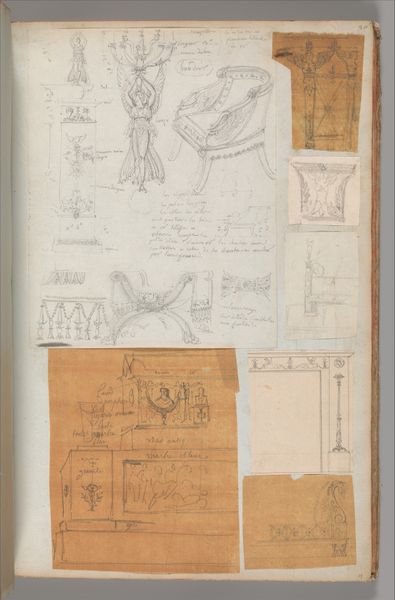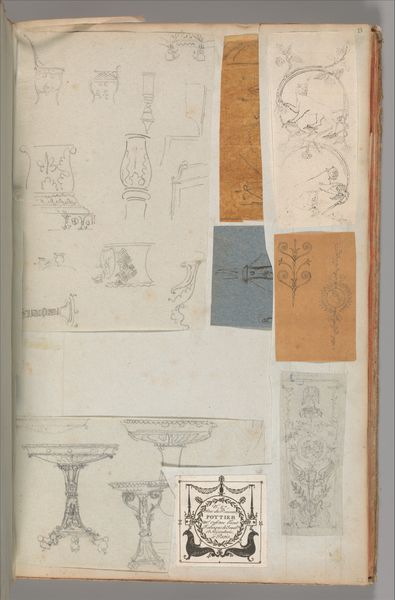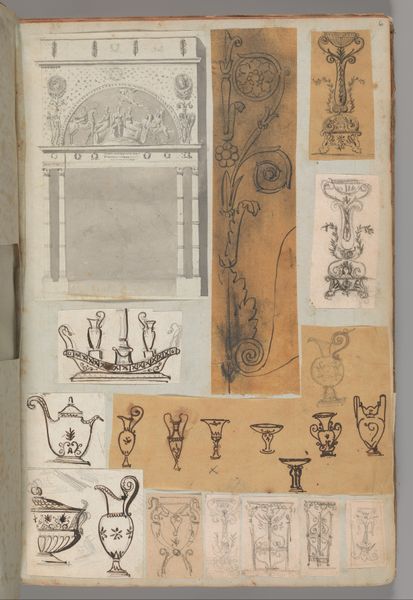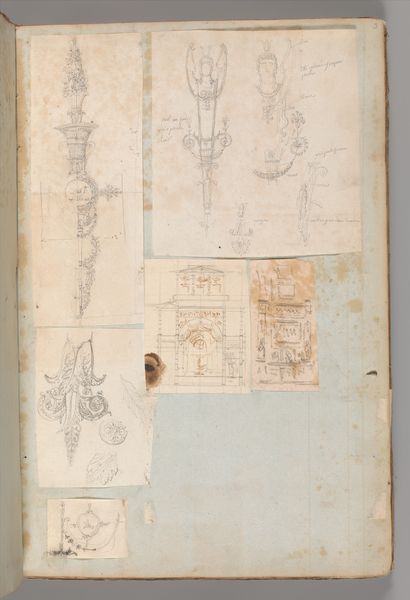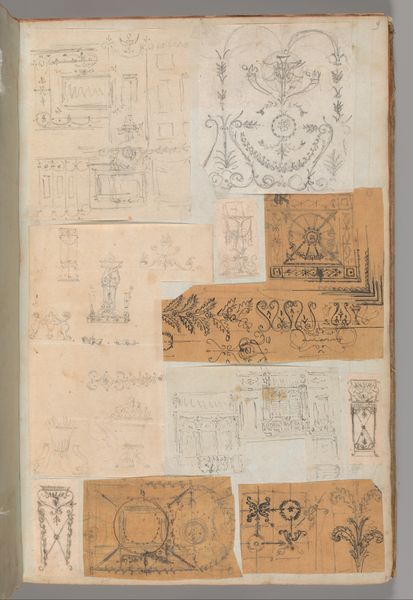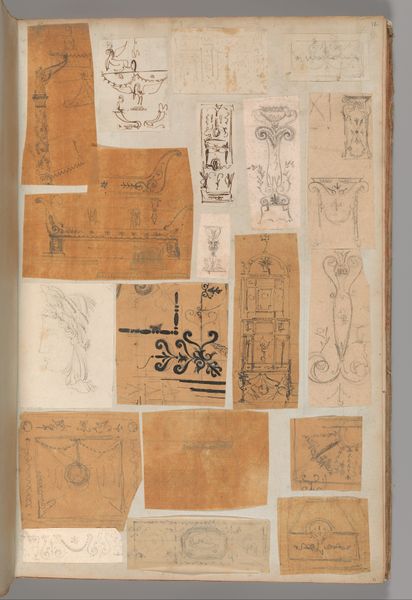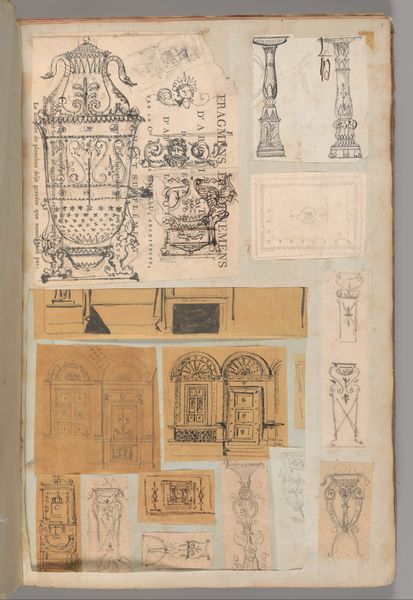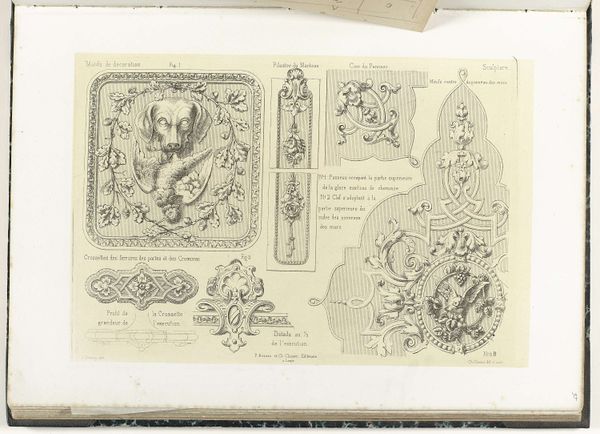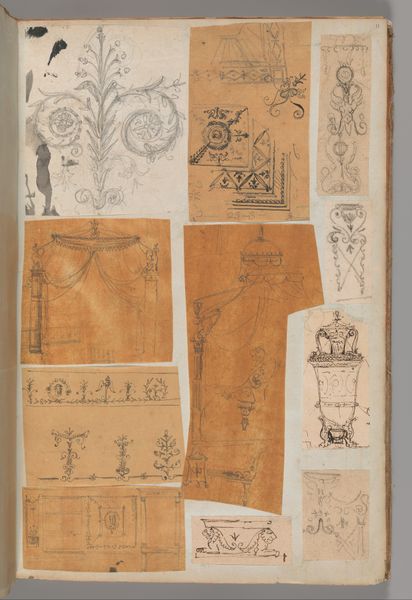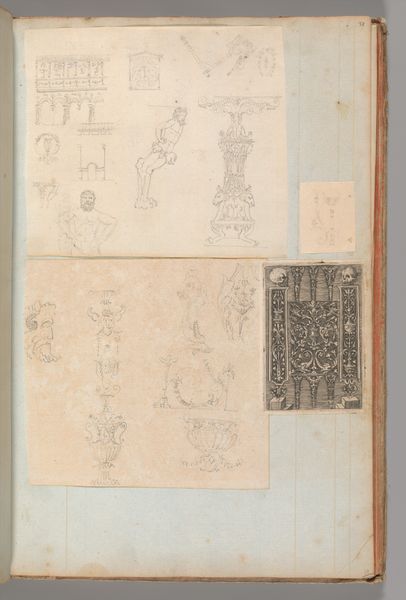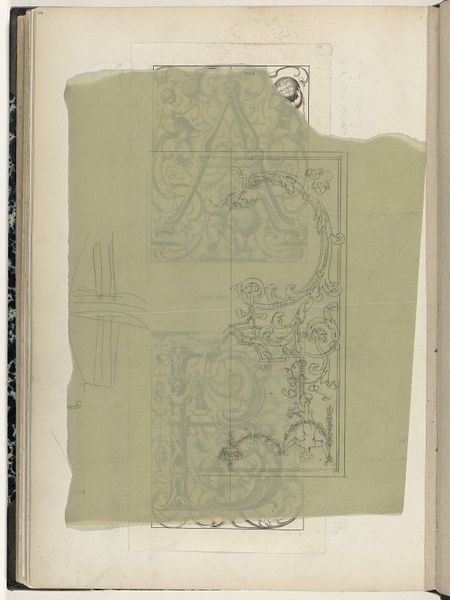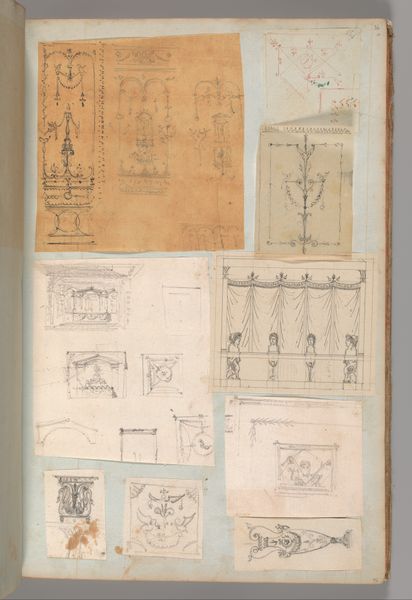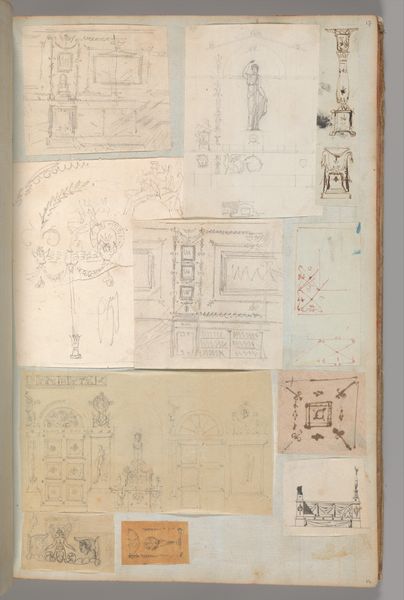
Page from a Scrapbook containing Drawings and Several Prints of Architecture, Interiors, Furniture and Other Objects 1795 - 1805
0:00
0:00
drawing, print, paper, pencil, architecture
#
drawing
#
neoclacissism
# print
#
landscape
#
figuration
#
paper
#
pencil
#
line
#
history-painting
#
architecture
Dimensions: 15 11/16 x 10 in. (39.8 x 25.4 cm)
Copyright: Public Domain
Curator: This page comes from a scrapbook by Charles Percier, dating from 1795 to 1805. It’s currently housed at the Metropolitan Museum of Art. We see a compilation of architectural drawings and prints, interior designs, furniture sketches, and other miscellaneous objects, all meticulously rendered. Editor: My first impression is one of intimacy and exploration. There's a beautiful chaos to it—like stumbling upon the artist's private thoughts. The delicate pencil work and the variations in scale give the impression of a fertile mind at work. Curator: Absolutely. Percier was a leading figure in the neoclassical movement, and this page offers a glimpse into the artistic process behind that aesthetic. Notice the recurring motifs: classical columns, wreaths, and geometric patterns. These reflect the era’s fascination with antiquity. Editor: Yes, and when considering material conditions and processes, the act of compiling this scrapbook becomes significant. Paper was relatively precious then. Percier, in gathering his sketches together like this, transforms mundane ephemera into something carefully considered, blurring boundaries of what could be regarded as art. It feels like proto-industrial design in formation. Curator: That's an interesting point about blurring boundaries. Given that this scrapbook would have served a deeply personal, perhaps even private function for the artist, in what ways can we interrogate the scrapbook form itself? After all, aren’t sketchbooks and personal collections an intimate portal to gendered labor and social activity? Editor: It prompts us to ask questions about design consumption and aesthetic desires. Percier wasn't simply drawing; he was visualizing how people might live, the objects they’d use and want. What did such intense visualization require for a particular class of consumers during the late 1700s and early 1800s? Curator: Ultimately, this seemingly simple page unlocks a richer understanding of the historical and social context that shaped Percier's artistic vision. It becomes a tapestry that unites material reality with aesthetic ambition. Editor: Indeed, analyzing the paper, pencils and ink used allows for a much deeper insight into 18th Century industrial practices and class divides and into who consumes the material results from the age. These materials offer tangible evidence about production and manufacturing in order to comprehend labor divisions based on the artwork created.
Comments
No comments
Be the first to comment and join the conversation on the ultimate creative platform.
